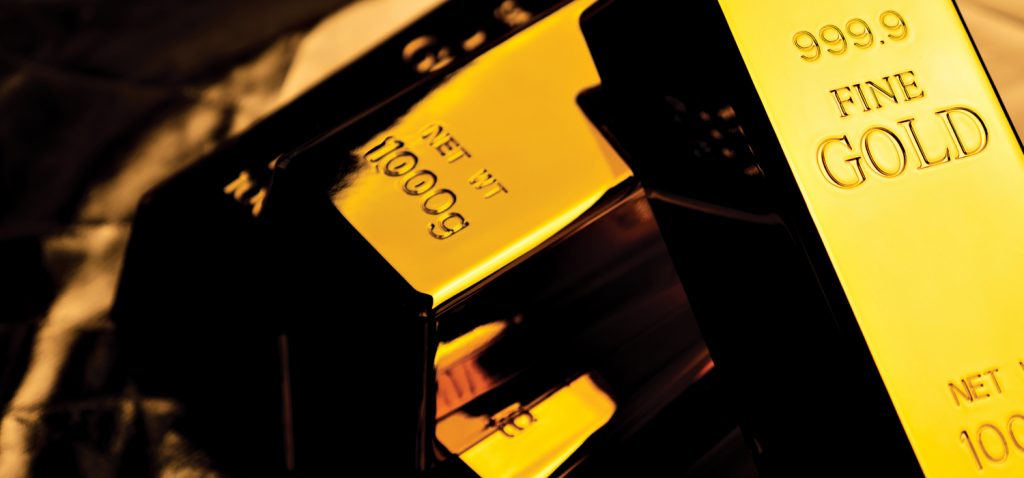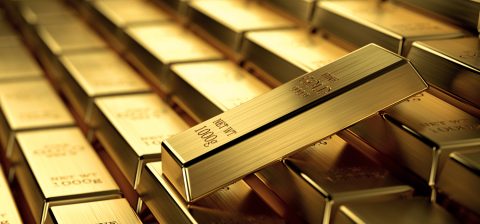SA Mining
A Surge In Investor Interest
By Nelendhre Moodley
Given that gold outperformed most commodities in 2020, what does the future hold for the precious metal? SA Mining recently caught up with John Mulligan, director of the World Gold Council, to chat about what 2021 holds for the shining star.
How did 2020 treat the gold industry?
The gold market, like all sectors, has been impacted by the COVID-19 pandemic and its social and economic consequences. However, unlike most other sectors, it has proved to be relatively robust in how it has fared and responded.
On the supply side, gold production may be down a little – Q3 mine output was down 3% on the same quarter in 2019 – but there have been no negative structural impacts. The gold mining sector’s response to the immediate threats of COVID-19 – for example, in supporting its employees and communities – has, for the most part, been exemplary. And the industry has, generally, been able rebound quite quickly in terms of a return to relatively normal capacity.
Gold consumption at the retail level has, unsurprisingly, been hit very hard by the pandemic lockdowns and the consequent damage done to consumer confidence. Globally, consumer demand for gold is at its lowest levels since 2009, in the wake of the great financial crisis. Gold investment on the other hand has soared, with a great many investors seeking out gold as a store of value and insurance asset.
This surge in investor interest has been reflected in gold’s value, and as an asset it outperformed nearly all other asset classes in 2020, although unsurprisingly, correcting slightly after reaching record highs in August. At the time of writing, the ZAR/oz price for gold is currently up around 45% over the year.
What were some of the defining elements?
The speed and scale of investment demand, particularly from institutional investors, as reflected primarily in record gold-backed exchange-traded funds (ETF) buying, was the key market dynamic of 2020. The global gold ETF market saw net inflows of well over 1 000 tonnes (or $57-billion) in 2020, taking total gold ETF AUM to a fresh new record high of 3 899t and $235bn. But this came on the back of heightened investor interest in gold that was already building before the pandemic struck, as investors were already expressing some concern over persistent vulnerabilities in the wider macro-economic environment – ultra-low interest rates, few return opportunities, hefty debt burdens. Some of these risks will likely have been exacerbated by the policy responses and huge emergency stimulus packages seeking to shore up national economies in the wake of COVID-19, and the risks these factors impose on the investment landscape will probably mean investment demand for gold will remain strong for some time.
And after the lockdown hiatus, we have seen private investors return to the market in force, seeking out gold as a safe haven. In Q3 we saw over 220 tonnes of bar and coin demand, up nearly 50% on the same period in 2019.
However, the flipside of this heightened risk environment has been the severely disrupted and depressed consumer markets with both access to products and consumer motivation being severely limited.
In key physical markets, such as India and China, some of the traditional event-driven purchasing of gold – for festivals and weddings – has been very severely disrupted. Although we are starting to see signs of recovery in some jewellery markets (for example in China), they are still very modest and it will take quite some time before consumer sentiment and confidence in discretionary spending power returns to levels that will translate into gold jewellery demand at historically more normal levels.
How did the events of 2020 set the platform for the performance for gold in 2021?
There are two very major drivers to consider when looking at gold demand and the price outlook for the year: broader sentiment – risk appetite or aversity – in mainstream investment markets and the potential recovery in consumer markets, particularly demand for jewellery, but also for bars and coins by private investors.
Capital market risk attitudes will very likely respond to the ongoing debate around the US election and that sentiment may carry into the new year, but investors, both institutional and private, will also remain aware of the deeply challenging economic landscape in the wake of the pandemic, and this should ensure that demand for gold investment product remains elevated, albeit perhaps not quite at the levels seen earlier this year.
Assuming that the course of the pandemic is kept under some degree of control, we would expect consumer markets to slowly return to some degree of normality, and demand levels may also be boosted by pent-up demand, for example, from jewellery purchases for weddings that were postponed from this year.
This form of demand – consumer purchases – does not immediately translate into the gold price, but allows a more stable trend in demand growth and that should, over the next year or so, allow the gold market to stabilise and rebalance.
What is the outlook for gold in 2021 in terms of demand and supply?
Consumer demand will probably be stronger, with a gradual recovery in jewellery, particularly in India and China. If lockdown restrictions are fully removed in these markets we may also see strong seasonal demand and event-driven buying – some of which may have been deferred from this year.
Given the rebound in production we have seen over the past few months, mine supply is expected to return to more normal levels quite soon, to around levels we have witnessed in recent years, although its longer-term growth trend is likely to have plateaued.
How have gold miners fared and what is the expected total gold production status for 2020?
Global mine production for H1 2020 was down 6% on H1 2019, but Q3 2020 was only down 3% on Q3 2019. This is a firm indication that gold mining has recovered quite quickly from the COVID-19 lockdowns and reflects the rapid and robust response from the sector when faced with the initial consequences of the pandemic. Many gold mining companies are very familiar with operating in challenging conditions and have, in recent decades, prioritised health and safety, so were probably far better equipped than other sectors when the virus started to spread. The logistical disruptions elsewhere in the supply chain, such as transportation, were also resolved quite quickly.
In the context of the challenges imposed by the pandemic lockdowns, it can be argued that this was quite a strong performance. We would expect annual gold production to be slightly down, but only in single-digit percentage figures, and probably close to 3 300 to 3 400 tonnes.
What will be factors influencing gold production in 2021?
Other factors permitting, we expect a return to normality and a fairly strong performance in a relatively benevolent price environment.
More widely, I think we will see a resumption of the factors that are likely to transform gold mining over the next few years: continued awareness of the need to demonstrate responsible and sustainable business practices and operations; and increased use of advanced technologies, electrification, and automation. There will be a continued emphasis on the need to look beyond current assets and rebuild reserves.
But, as things stand, the longer-term challenges of replacing depleted reserves and translating exploration into discovery still suggest that, beyond the next few years, we may then start to see a gradual decline in global production levels.







 Sign-up and receive the Business Media MAGS newsletter OR SA Mining newsletter straight to your inbox.
Sign-up and receive the Business Media MAGS newsletter OR SA Mining newsletter straight to your inbox.